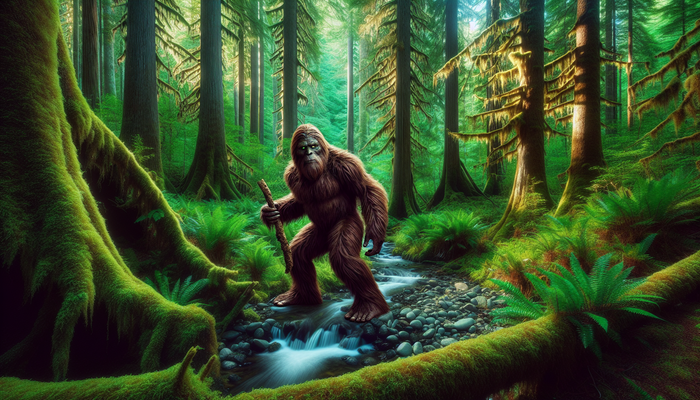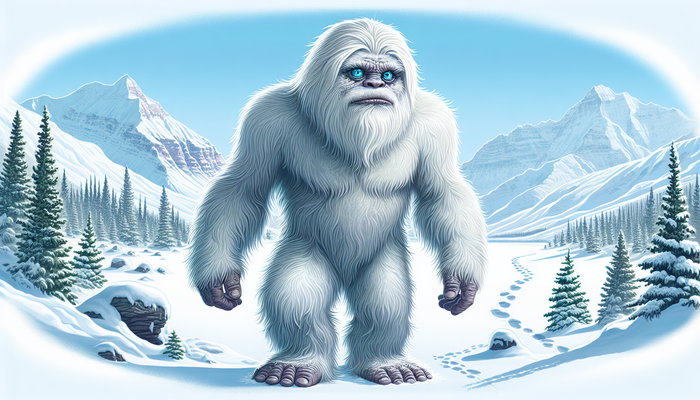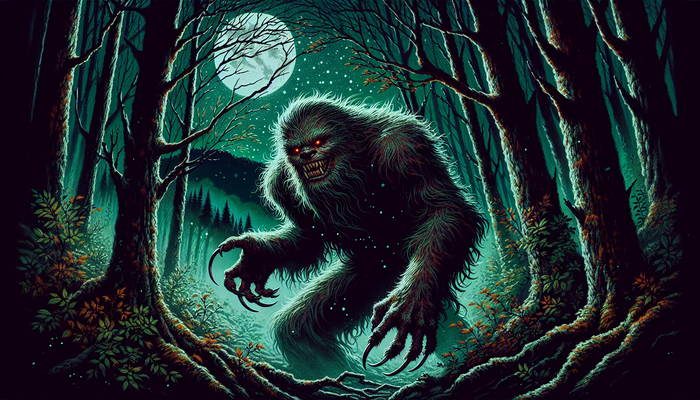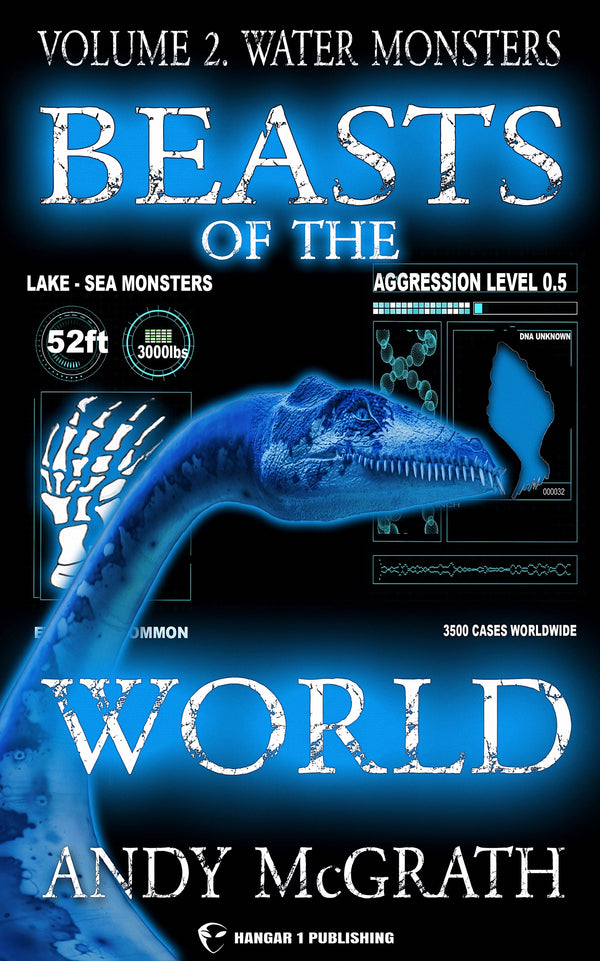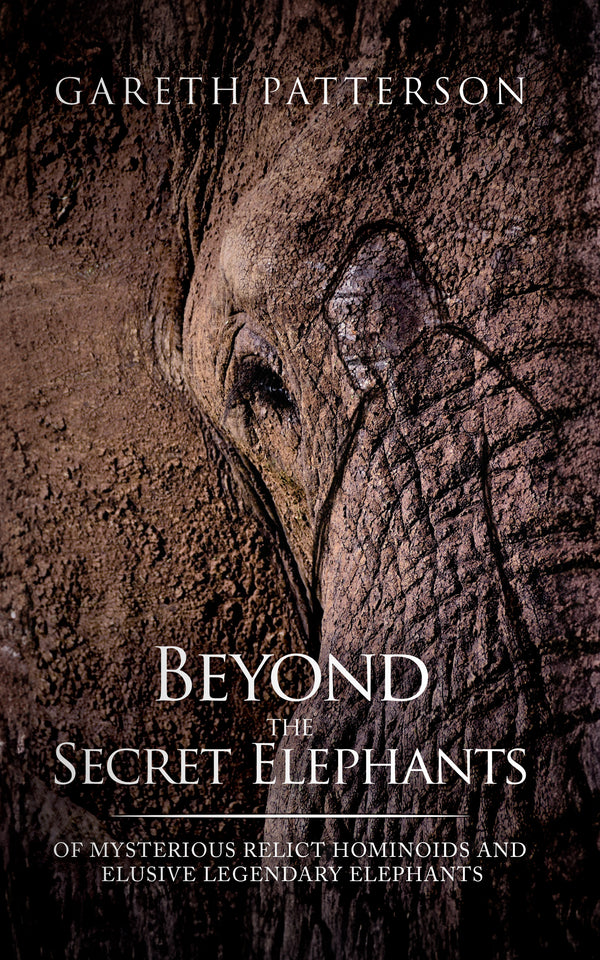Hawaii's Legendary Bigfoot Sightings
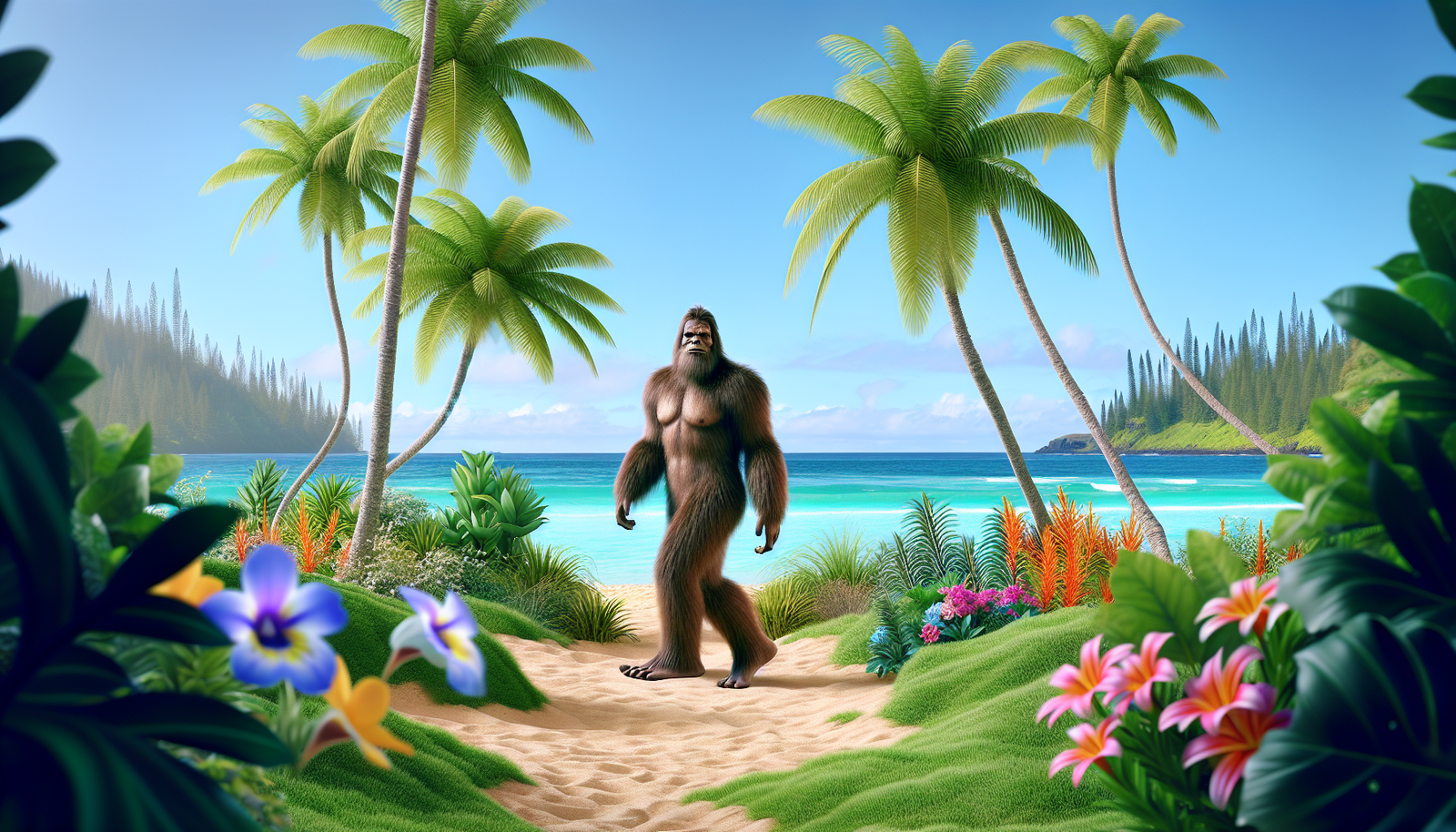
By Lucas Jennings, Cryptozoologist
Picture this: you're trekking through a lush Hawaiian rainforest, the air thick with the scent of tropical flowers and the sound of exotic birdsongs. Suddenly, you catch a glimpse of movement in the corner of your eye. You turn, expecting to see a colorful bird or perhaps a curious mongoose, but instead, you find yourself face-to-face with a creature that defies explanation—a diminutive, hairy humanoid, standing no more than three feet tall, with a muscular build and a pointed head. You've just had an encounter with one of Hawaii's most enduring legends: the Menehune.
As a lifelong enthusiast of cryptids and legendary creatures, I've always been fascinated by the stories that exist on the fringes of our understanding, the tales that hint at a world beyond the boundaries of conventional science. And when it comes to the realm of cryptozoology, few places on Earth are as intriguing as the Hawaiian Islands. While Hawaii may be the only U.S. state without a single reported Bigfoot sighting, it is home to a rich tapestry of mythical beings, from the shape-shifting Kupua to the giant, cannibalistic Aikanaka. But perhaps none are as captivating as the Menehune, Hawaii's own legendary "little people."
In this article, we'll delve deep into the mysteries surrounding these enigmatic beings, exploring their origins in Hawaiian folklore, examining eyewitness accounts and reported sightings, and considering the various theories that attempt to explain their existence. We'll also look at how the Menehune fit into the broader context of Hawaii's supernatural beliefs and the ongoing search for cryptids worldwide. So, grab your hiking boots and your sense of wonder, and let's embark on a journey into the heart of one of Hawaii's most enduring legends.
The Menehune: Legends and Descriptions
The Menehune have been a part of Hawaiian folklore for centuries, their stories passed down from generation to generation. According to these ancient tales, the Menehune were a race of skilled craftspeople and builders, renowned for their ability to construct massive structures in a single night. They were said to be diminutive in stature, standing between two and three feet tall, but possessed of superhuman strength and abilities.
In terms of physical characteristics, the Menehune were typically described as having muscular builds, dark brown hair, and pointed heads. Some accounts even suggest that they had slightly enlarged eyes and ears, adaptations that may have helped them navigate the dense forests and rocky terrain of the Hawaiian Islands.
One of the most famous legends associated with the Menehune is the construction of the Alekoko Fishpond on the island of Kauai. This massive, walled structure is said to have been built by the Menehune in a single night, with the tiny beings forming a human chain to transport the heavy stones from the nearby mountains to the construction site. The fishpond, which is still visible today, is a testament to the Menehune's incredible engineering skills and their ability to work together in perfect harmony.
Another impressive feat attributed to the Menehune is the creation of the Kīkīaola Ditch, also on Kauai. This intricate irrigation system, which is still functional today, is said to have been built by the Menehune using only stone tools. The precision and complexity of the ditch's construction have baffled modern engineers, who struggle to explain how such a sophisticated system could have been built without the aid of modern technology.
Other structures across the Hawaiian Islands, from ancient temples to hidden caves, have also been attributed to Menehune craftsmanship. These enduring legends paint a picture of a highly skilled and industrious people, capable of achieving the impossible through their combined efforts and supernatural abilities.
Reported Sightings and Encounters
While the Menehune are often relegated to the realm of myth and legend, there have been numerous reported sightings and encounters over the years that suggest these mysterious beings may be more than just a figment of the collective imagination.
One of the most compelling accounts comes from a man named Rob Carlson, who, in 1973, had a terrifying encounter in the Whitmore Village area, near the Wahiawa Mountains on the island of Oahu. According to Carlson's testimony, he and a group of friends were fishing in a remote river when they heard a blood-curdling scream emanating from the nearby bushes. As they ran up the embankment to escape, they came face-to-face with an eight-foot-tall naked man, who was quickly joined by a seven-foot-tall female figure.
Carlson and his friends managed to flee the scene, but when they returned the following morning, they discovered a series of 20-inch footprints in the mud near their fishing spot. The size and shape of the prints, coupled with the harrowing encounter from the previous night, led Carlson to believe that he and his friends had had a brush with the legendary Menehune.
Another intriguing account comes from the town of Wahiawa, where locals have long told stories of a giant man lying on the road along the winding Kaukonahua Road. This figure, known as "Aikanaka," is said to be the spirit of an ancient, cannibalistic chief who once terrorized the area. Some have speculated that Aikanaka may be related to the Menehune, or perhaps even a distant ancestor of these mysterious beings.
Sightings of the Menehune and their kin have been reported across the Hawaiian Islands, from the dense forests of Kauai to the rocky shores of Hawaii's Big Island. While many of these accounts remain unverified, the sheer volume and consistency of the stories suggest that there may be more to the Menehune than mere myth.
Connections to Other Hawaiian Cryptids
The Menehune are just one thread in the rich tapestry of supernatural beings that populate Hawaiian folklore. Many of these creatures share intriguing connections and similarities, hinting at a complex and interconnected web of beliefs that have shaped the islands' cultural landscape for centuries.
One of the most striking parallels can be drawn between the Menehune and the Aikanaka, a giant, eight-to-ten-foot-tall muscular being that has been reported in the isolated areas of the Wahiawa Mountains on Oahu. Some believe that the Aikanaka may be a descendant of the mythological figure Nu'u, who, according to legend, escaped a great flood by building a massive canoe that eventually landed on the slopes of Mauna Kea.
The Aikanaka's connection to the Menehune is a matter of speculation, but some researchers have suggested that the two may represent different branches of the same ancient race, with the Menehune being the diminutive cousins of their larger, more aggressive kin.
Another intriguing Hawaiian cryptid with potential links to the Menehune is the Kupua, a shape-shifting spirit with the ability to take on both animal and human forms. In some stories, the Kupua are described as being able to transform into a doglike or wolflike creature, bearing a striking resemblance to the "Dogmen" or "Werewolves" that have been reported in other parts of the United States.
The idea of shape-shifting spirits and supernatural beings with the ability to assume different forms is a common thread in Hawaiian mythology, and it's possible that the Kupua and the Menehune are part of the same broader tradition of belief.
These connections and similarities serve to highlight the rich and complex nature of Hawaiian folklore, and the way in which different supernatural beings and traditions intersect and overlap. By studying these relationships, we can gain a deeper understanding of the cultural context in which the Menehune and other Hawaiian cryptids have emerged and evolved over time.
Theories and Debates Surrounding the Menehune
As with any cryptid or legendary being, the Menehune have been the subject of much debate and speculation over the years. One of the central questions surrounding these mysterious creatures is whether they were a real, historical people or simply a product of mythological imagination.
Some researchers point to a tantalizing piece of evidence from 1820, when a census of the island of Kauai listed 65 individuals as "Menehune." This has led some to speculate that the Menehune may have been a real, if perhaps marginalized, group of people who lived on the fringes of Hawaiian society.
However, other scholars, such as the folklorist Katharine Luomala, have argued that the Menehune are more likely a product of post-European contact mythology, with the term "Menehune" being adapted from the Tahitian word "manahune," which referred to a lower class of people. According to this theory, the legends of the Menehune may have been influenced by European tales of brownies and other diminutive, supernatural beings.
Another intriguing theory suggests that the Menehune may be connected to an as-yet-undiscovered species of hominid, perhaps a form of "little Bigfoot" that has managed to survive in the remote, isolated environments of the Hawaiian Islands. Proponents of this idea point to Hawaii's unique geography and ecology, which could potentially provide a haven for a relict population of small, elusive primates.
While this theory remains highly speculative, it does raise interesting questions about the potential for undiscovered species to exist in some of the world's most remote and inaccessible regions.
Regardless of their true nature, the Menehune have become a deeply ingrained part of Hawaiian culture and identity. Their legends and stories have been passed down through generations, and the ancient sites and structures attributed to their handiwork serve as enduring testaments to the power of myth and legend in shaping our understanding of the world around us.
The Search for the Menehune
For those who believe in the existence of the Menehune, the search for conclusive evidence of their presence has become a lifelong pursuit. Researchers, enthusiasts, and curious individuals have scoured the Hawaiian Islands for decades, hoping to catch a glimpse of these elusive beings or uncover physical proof of their existence.
However, the search for the Menehune is fraught with challenges. The dense, tropical forests and rugged, mountainous terrain of the islands make it difficult to conduct thorough, systematic searches, and the Menehune's alleged ability to blend into their surroundings and avoid detection only adds to the difficulty of the task.
Moreover, the very nature of the Menehune as a legendary or mythological being means that any evidence of their existence is likely to be met with skepticism from the scientific community. Without clear, verifiable proof, such as physical remains, DNA evidence, or high-quality video footage, the Menehune are likely to remain a subject of fascination and debate rather than a recognized, documented species.
Despite these challenges, the search for the Menehune continues, driven by the enduring allure of the unknown and the tantalizing possibility that these mysterious beings may be more than just a figment of our collective imagination. For many researchers and enthusiasts, the pursuit of the Menehune is as much about the journey as it is about the destination, a chance to explore the boundaries of our understanding and to keep alive the sense of wonder and mystery that makes the world a more fascinating place.
As the search for the Menehune continues, it is important to approach the subject with respect and sensitivity, recognizing the deep cultural significance that these beings hold for the Hawaiian people. Any investigation into the Menehune must be conducted in a way that honors and preserves the rich heritage and traditions of the islands, rather than exploiting or sensationalizing them for personal gain or notoriety.
The Menehune's Place in the World of Cryptozoology
The Menehune occupy a unique and fascinating position within the broader world of cryptozoology, the study of hidden or unknown animals. While they share some similarities with other legendary "little people," such as the European leprechauns or the brownies of Scottish and English folklore, the Menehune are distinctly Hawaiian in their origin and character.
Unlike many other cryptids, which are often described as dangerous or aggressive, the Menehune are generally portrayed as benevolent, if somewhat mischievous, beings. Their legendary feats of engineering and construction set them apart from other diminutive humanoids, and their deep connection to the natural world and the islands' ecosystems reflects the intimate relationship between the Hawaiian people and their environment.
In many ways, the Menehune serve as a bridge between the realm of mythology and the world of cryptozoology, blurring the lines between what is real and what is imagined. Their enduring presence in Hawaiian folklore and the countless stories of encounters and sightings over the years suggest that there may be more to these mysterious beings than mere legend.
As interest in cryptozoology continues to grow, fueled by popular television shows, movies, and the internet, the Menehune have captured the imagination of people around the world. Their unique blend of mythological intrigue and potential biological reality has made them a subject of fascination for researchers, enthusiasts, and casual observers alike.
However, it is important to approach the study of the Menehune, and indeed all cryptids, with a critical and scientific mindset. While the allure of the unknown is undeniably compelling, we must be careful not to let our desire for discovery and wonder override our commitment to evidence-based inquiry and rigorous analysis.
By studying the Menehune and other cryptids through the lens of science, folklore, and cultural anthropology, we can gain a deeper understanding of the complex ways in which human societies have interacted with the natural world and the role that mythology and legend have played in shaping our perceptions of reality.



